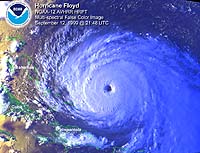You probably used a mouse to click your way to this Web page. But you probably don't know the NASA connection.
In the early 1960s, Doug Englebart -- who started his career working on wind tunnels at the Ames Aeronautical Laboratory (now NASA's Ames Research Center) -- was at the Stanford Research Institute, looking into different options for manipulating data on computer screens.
Englebart says he had already been "dreaming and pushing about using computer interactivity for about a decade" when a grant from NASA (Read More) helped him launch a study of various devices. His primitive mouse won out, and the little device many of us couldn't live without today had been born.
No, NASA didn't invent the mouse, but it wouldn't be the first or last time NASA-related research led to a culture-changing innovation.
NASA-inspired communications satellites connect the world, while orbiting eyes in the sky track hurricanes, wildfires and volcanoes. (Read More) Health care workers can monitor many patients at once, thanks to technology first used to watch the health of astronauts. And NASA research is helping make it safer to fly in a plane or drive on the nation's highways. (Read More)
NASA's annual publication Spinoff highlights innovations like these, helping the general public "understand the benefits of space research in layman's terms" according to Spinoff Program Manager Janelle Turner.
For Turner, technologies with a medical impact stand out most.
Take Adam Kissiah's story. Driven by his own hearing problem, he developed the cochlear implant, a device that has restored hearing for thousands, and allowed others born deaf to hear for the first time. Kissiah had no medical training, but used expertise learned as an electronics instrumentation engineer at NASA's Kennedy Space Center. (Read More)
NASA researcher Dr. Rafat Ansari was working on experiments studying small particles suspended in liquids when he realized that his work could possibly help detect cataracts, the degenerative eye condition afflicting his father. Now the instrument is being adapted to identify other eye diseases, diabetes and possibly even Alzheimer's. As a child in Pakistan, he decided to become a scientist because he saw people walking on the moon.(Read More)
Dr. Howard Ross, NASA's Acting Deputy Associate Administrator for Science in the Office of Biological and Physical Research, says Ansari's work is one of his favorite stories.
"What we do in space is much more than just science," Ross says. "We really do inspire people and change lives, and create new technology that goes far beyond the boundaries of just pure science."
But it's not all serious business. Engineers at NASA's Langley Research Center helped Hasbro with the aerodynamics of the Nerf Glider, helping kids perform banking maneuvers and loop-the-loops in their backyards. (Read More) And for the older crowd, NASA has partnered with the wine industry to help find the best areas in a vineyard. (Read More)
If you're looking for a special someone to share that glass of wine with, NASA-inspired research may be able to help there too.
Artificial intelligence researcher Michael Georgeff applied abstract concepts similar to those he used on a NASA software project to matchmaking software used by an Internet dating company. (Read More)
The real value of the NASA-funded research, says Georgeff, is in laying the groundwork for future machines that will need to "think" and probably even "feel" like humans. "There is a fantastic story that can be told here," says Georgeff. "NASA started it all!"

